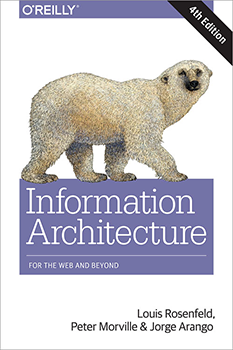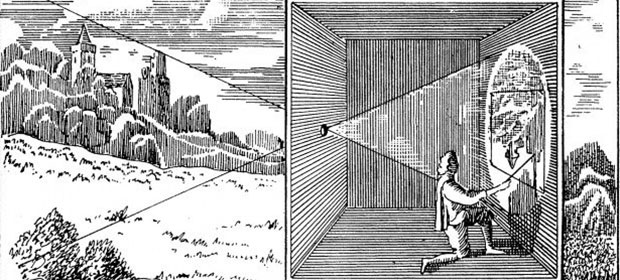"experience design" entries

Design for the greater good
The O’Reilly Design Podcast: Gretchen Anderson on designing for social impact.
Subscribe to the O’Reilly Design Podcast, our podcast exploring how experience design — and experience designers — are shaping business, the Internet of Things, and other domains.
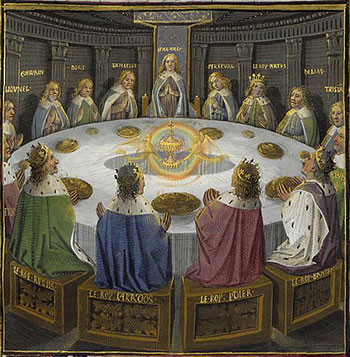 In this week’s Design Podcast episode, I sit down with designer Gretchen Anderson. Anderson is the author of the free O’Reilly report Designing for Social Impact and a program committee member for OReilly’s inaugural design conference, where she is also moderating a panel on designing with data for social impact.
In this week’s Design Podcast episode, I sit down with designer Gretchen Anderson. Anderson is the author of the free O’Reilly report Designing for Social Impact and a program committee member for OReilly’s inaugural design conference, where she is also moderating a panel on designing with data for social impact.
In this podcast episode, Anderson talks about design as a force to improve our lives and about approaching design as an inclusive discipline.
Here are a few highlights from our chat:
Forget the color palette conversations. Stop trying to make everyone understand the craft of design any more than they want to — just take your seat at the table. Greg Petroff talks about how designers can be a little bit paranoid by nature. I think that comes with the territory. There can be a lot of ‘us and them’ — I think it’s important to really drop that way of thinking. Not everyone does what you do, but that does not mean that you aren’t part of a larger ecosystem; you want to foster that creative part of bringing everyone together.
Design is about finding and testing and being able to hold a point of view on what people need and want, whatever your mission or enterprise is, and being someone who can reconcile constraints into something awesome, not just the sad compromise of everyone’s democracy. Have the bravery and the skills to hold that and the relentless passion and patience for refinement of an idea, even the bad ones sometimes.

Design for understanding
How Information Architecture helps create environments that are understandable and useable by human beings.
Register for the O’Reilly Design Conference, which will be held January 19-22, 2016, in San Francisco. Jorge Arango will be speaking at the event about information architecture and semantic environments.
Editor’s note: This post is an excerpt from “Information Architecture, 4th Edition,” by Jorge Arango, Louis Rosenfeld, and Peter Morville.
We only understand things in relationship to something else. The frame around a painting changes how we perceive it, and the place the frame is hanging in changes it even more: we understand an image displayed in New York’s Museum of Modern Art differently than one hanging in a shared bathroom in a ratty hotel. Context matters.When designing an information architecture, we are engaging in a new type of placemaking: one that alters how we perceive and understand information. As with (building) architects, information architects are concerned with creating environments that are understandable and useable by human beings, and which can grow and adapt over time to meet their needs and those of their organizations.
In the previous chapter, we saw how the lens of information architecture can help designers make stuff easier to find by setting it in structures made of language. Now, we’ll explore how these structures can make stuff more understandable by molding the context that we perceive it in.
A sense of place
You get out of bed. You stumble clumsily to the bathroom for a morning toilet, then walk to the kitchen to brew a cup of coffee and toast some bread. It’s not even 6 a.m. yet, and you have already transversed three distinct places with different uses and configurations: bedroom, bathroom, and kitchen. Read more…

Survey says: Be promiscuous with your design tools
A look at results and insights from Khoi Vinh’s design tools survey.
Editor’s note: Khoi Vinh is a member of the program committee for O’Reilly’s Design Conference. Registration is now open — reserve your spot today.
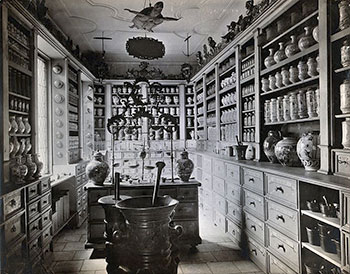 Khoi Vinh recently released his inaugural design tools survey. Vinh has been following the tools ecosystem for some time, and recently announced he will be joining Adobe. The survey focuses on six tasks designers manage: brainstorming, wireframing, interface design, prototyping, project management, and version control and file management.
Khoi Vinh recently released his inaugural design tools survey. Vinh has been following the tools ecosystem for some time, and recently announced he will be joining Adobe. The survey focuses on six tasks designers manage: brainstorming, wireframing, interface design, prototyping, project management, and version control and file management.
What jumped out at me? It’s a mixed bag, just as I expected. Pen and paper continues to be a key communication tool. I wasn’t surprised by the popularity of HTML and CSS, or Invision, but I was surprised by the lower ranking for Axure. It’s refreshing to see the investment in the design tools space, even if it the choices can seem overwhelming. Let me know what you think in the comments below or through Twitter (@marytreseler).
I sat down with Vinh to discuss the tools market and, specifically, the results and thinking behind his survey.
What prompted you to develop the tools survey?
The past two or three years have just been incredibly interesting for software geared toward digital designers. We’ve seen a slew of new contenders, and a whole new category — UX prototyping — where we get brand new apps seemingly once a month. So, I wanted to try to shed some light on all of this activity and get a sense of how these new applications are getting adopted, and by whom.
What were your findings?
At a high level, I found that it’s a very diverse market, which is itself a real statement. A decade ago, most everyone used Adobe’s tools for almost everything. Now you have up-and-comers like Sketch (from Bohemian Coding) and InVision both really taking hold in the market. Some categories have no clear winner, like prototyping. I think it’s all really exciting. Read more…

Designing responsibly in the attention economy
The O’Reilly Design Podcast: Tristan Harris on design ethics and leaving things better than you find them.
Subscribe to the O’Reilly Design Podcast, our podcast exploring how experience design — and experience designers — are shaping business, the Internet of Things, and other domains.
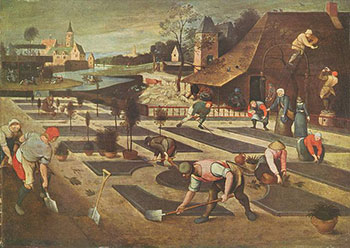 In this week’s Design Podcast episode, I sit down with Tristan Harris, design thinker, entrepreneur, and philosopher at Google, and speaker at O’Reilly’s first design conference.
In this week’s Design Podcast episode, I sit down with Tristan Harris, design thinker, entrepreneur, and philosopher at Google, and speaker at O’Reilly’s first design conference.
Harris talks about Design for Time Well Spent, the Doubt Club, and why it’s important to leave things better than you find them.
Here are a few highlights from our chat:
I think one aspect of why designers need to design responsibly is this new scale, this new proportion of influence and impact — because one choice about whether something takes five seconds of someone’s life versus one second of someone’s life gets multiplied by a billion people.
Even when the intention is very good and very positive, it devolves into what I’ve called the ‘race to the bottom of the brain stem’ to seduce people’s psychological instincts. The best way to get time from people, the best way to seduce or get their attention, is to use people’s psychological biases in a way that gets them to come back or stay.
Part of being ethical means being deeply thoughtful, comprehensive — not just optimistic about the one goal that you have, but to see where that goal might break down.

Every (successful) company is a service company
Designers are helping to shape the businesses, products, and services in our changing economy.
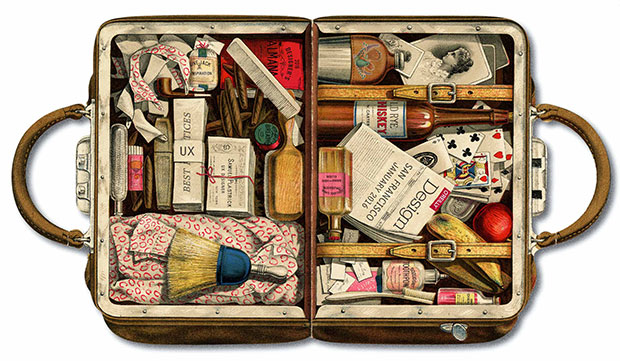
Register now for the O’Reilly Design Conference, which will explore the evolving role of design in business and society along with the tools designers need to shape the next generation of products and services.
Loosely defined, service is the relationship between consumer and company. There are traditional service companies, such as hotels and transportation companies, and their modern counterparts Uber and Airbnb.
Then there are companies that are changing their identities from product companies to service companies, with varying degrees of success: for example, IBM, morphing from hardware to services, and Adobe, moving its software model to a cloud-based, subscription-based service. Whether you’re new to the game or established, almost any product today must have a service aspect.
Why does this matter — and what does it mean for designers?
Tim O’Reilly wrote a recent piece on how the economy is being shaped by software and connectedness. He explained:
One way to think about the new generation of on-demand companies, such as Uber, Lyft, and Airbnb, is that they are networked platforms for physical world services, which are bringing fragmented industries into the 21st century in the same way that ecommerce has transformed retail.
The evidence is clear: we’re living in an attention economy, with thousands of devices and companies competing for eyeballs. Our products are now connected and smart, and the consumer-product relationship is long term, with data fueling the courtship. It’s no longer enough to have a great product — it needs to be coupled with a great service. Service is at the heart of any user experience, and designers are crafting this experience, forging the connections between products and consumers. Read more…

Design is how users feel when experiencing products
The O’Reilly Design Podcast: Cindy Alvarez on emotion, user research, and why Craigslist is great design.
Subscribe to the O’Reilly Design Podcast, our podcast exploring how experience design — and experience designers — are shaping business, the Internet of Things, and other domains.
 In this week’s Design Podcast episode, I sit down with Cindy Alvarez, a designer at Microsoft, author of Lean Customer Development, and member of our program committee for O’Reilly’s first design conference.
In this week’s Design Podcast episode, I sit down with Cindy Alvarez, a designer at Microsoft, author of Lean Customer Development, and member of our program committee for O’Reilly’s first design conference.
Alvarez talks about how design is changing, how the approach to design at Microsoft is changing, and user research misperceptions and challenges. She also offers advice to those who are insisting all designers should code.
Here are a few highlights from our chat:
Steve Jobs has said that, “Design is not how it looks, it’s how it works.” I would go one step further and say, “Design is how you work.” When you’re using something, how do you feel … How are you feeling more capable — do you feel smarter? Do you feel stronger? Do you feel stupider? Design is how you feel when you are using things or having experiences.
The ‘butt-brush’ effect comes from the wonderful Paco Underhill book Why We Buy. … Specifically, the butt-brush phenomenon is people looking at products that they really wanted to buy, but the store layout made it so people were bumping into them. That was such a strong push to get them to abandon what they were doing … that they’d just get up and walk away. He theorized about people feeling vulnerable, and undoubtedly there’s some sort of evolutionary thing about woolly mammoths sneaking up on us or something. I think it’s just, on a more base level, people feel clumsy. They feel fat, they feel clumsy and awkward, and we don’t like that at all.

Tweaking personas: Mastering the hunt for the ideal user
Personas are a useful tool, almost always used badly.
Register for the UX Design for Growth — Improving User Conversion training session with Laura Klein. In this online, interactive training workshop, Klein, author of “UX for Lean Startups,” will teach you to design for product growth.
Personas have always struck me as a potentially useful tool that is almost always used badly. In theory, they’re great. Who doesn’t love a deliverable that is designed to get everybody on the team more familiar with the ideal user? Why wouldn’t we create something to help us focus our design and engineering efforts around the real people using our products?
Unfortunately, the reality rarely lives up to the hype. Personas, as they are created in many organizations, aren’t nearly as useful as they could be. They’re rarely based on real user insights developed during research. They tend to be overly broad and generalized. They’re descriptive, rather than predictive. And that’s just a few of the things people get wrong. Read more…

Design for success: Manage business and user goals
Laura Klein on what makes a successful designer and how we should measure the success of product designs.
Register for the UX Design for Growth — Improving User Conversion training session with Laura Klein. In this online, interactive training workshop, Klein, author of “UX for Lean Startups,” will teach you to design for product growth.
Designers have become more and more integral to the success of their organizations. This increase in visibility and responsibility requires new skills, a greater understanding of the goals of the business, the ability to work with a wider variety of stakeholders within the organization, and new ways to measure the success of design work. I recently spoke with Laura Klein, designer, researcher, engineer, and author of UX for Lean Startups and the popular design blog Users Know, about these topics.
Understanding the goals of the business
In discussing the essential skill set for designers today, Klein explains why designers need to understand what their organization is trying to accomplish and why they should get comfortable working with people outside of the design team:
I think nowadays we really have to understand what the business goals are and also what the user goals are, and how those two things can work together to make a great experience for the customer that also helps the business. … More and more, we’re really working on cross-functional teams, which I think is wonderful. It might mean that we’re working with a marketing person and an engineer or several engineers, and a product manager. We’re no longer just working off in our little silos with all the other designers, when all we have to do is talk design. We’re working with a really diverse group of people … I think it’s better for products, but it does mean we have to know how to communicate with more types of people. Learning how to do that can be incredibly important.

A little AI in lots of things: Our most promising future with tech
The O'Reilly Radar Podcast: David Rose on enchanting objects, avoiding cognitive overload, and our future relationship with tech.
Subscribe to the O’Reilly Radar Podcast to track the technologies and people that will shape our world in the years to come.
In this episode of the Radar Podcast, I chat with David Rose, an entrepreneur, MIT Media Lab instructor, and author of Enchanted Objects. We talk about which objects we should enchant, and how to avoid being overwhelmed by object communication and cognitive overload.
Rose also weighs in on the AI debate and outlines the four potential ways he sees the Internet of Things shaking out.
Here are a few snippets from our conversation:
I’ve been a fan of magic and of studying the tropes that magicians have used to control the emotional arc of a trick, for example, and I think enchantment, for me, sort of sets a high bar for designers to consider not just the mechanism of what’s happening, but also consider how people are engaged — and are people delighted? What’s their emotional reaction to whatever the new connectivity or new sensor or new display is that’s in one of these objects?
Those phenomenon of using light and pattern and texture are all pre-attentive — meaning your brain process them in parallel; it’s non-distracting; it happens in less than 250 milliseconds. That’s the design space for the best types of interactions with objects because they don’t tend to overwhelm you, and you don’t perceive them as being a cognitive load because they aren’t a cognitive load.

Privacy and security are every UX designer’s responsibility
The O’Reilly Design Podcast: Ame Elliott on UX privacy and security, and how architecture informs her design work.
Subscribe to the O’Reilly Design Podcast, our podcast exploring how experience design — and experience designers — are shaping business, the Internet of Things, and other domains.
 In this week’s Design Podcast episode, I sit down with Ame Elliott, design director at Simply Secure. She addresses the relationship between — and challenges of — privacy and security, noting “there’s plenty of tough to go around.”
In this week’s Design Podcast episode, I sit down with Ame Elliott, design director at Simply Secure. She addresses the relationship between — and challenges of — privacy and security, noting “there’s plenty of tough to go around.”
Elliott also talks about how her experience of attending architecture school informs her design work, and looks at the responsibility of designers to create for a greater good.
Here are a few highlights from our chat:
I think architecture can be a wonderful form of a design-inspired liberal arts education. If you look at places like Italy, I think there are certainly ways that you can go to architecture school and not be set up to practice architecture. The studio experience of actually being together in this communal space, working on a drafting table, making things visual — it’s so foundational to a lot of the things that are called ‘design thinking’ today.
Privacy or confidentiality is one technical goal of security. There are other technical goals of security: integrity, non-reputability, and other kinds of things. Coming at this from a human-centered design perspective … I care about what end users experience, and privacy feels like the quality people are looking for in an interaction.
